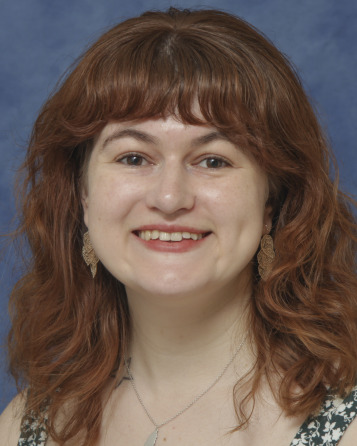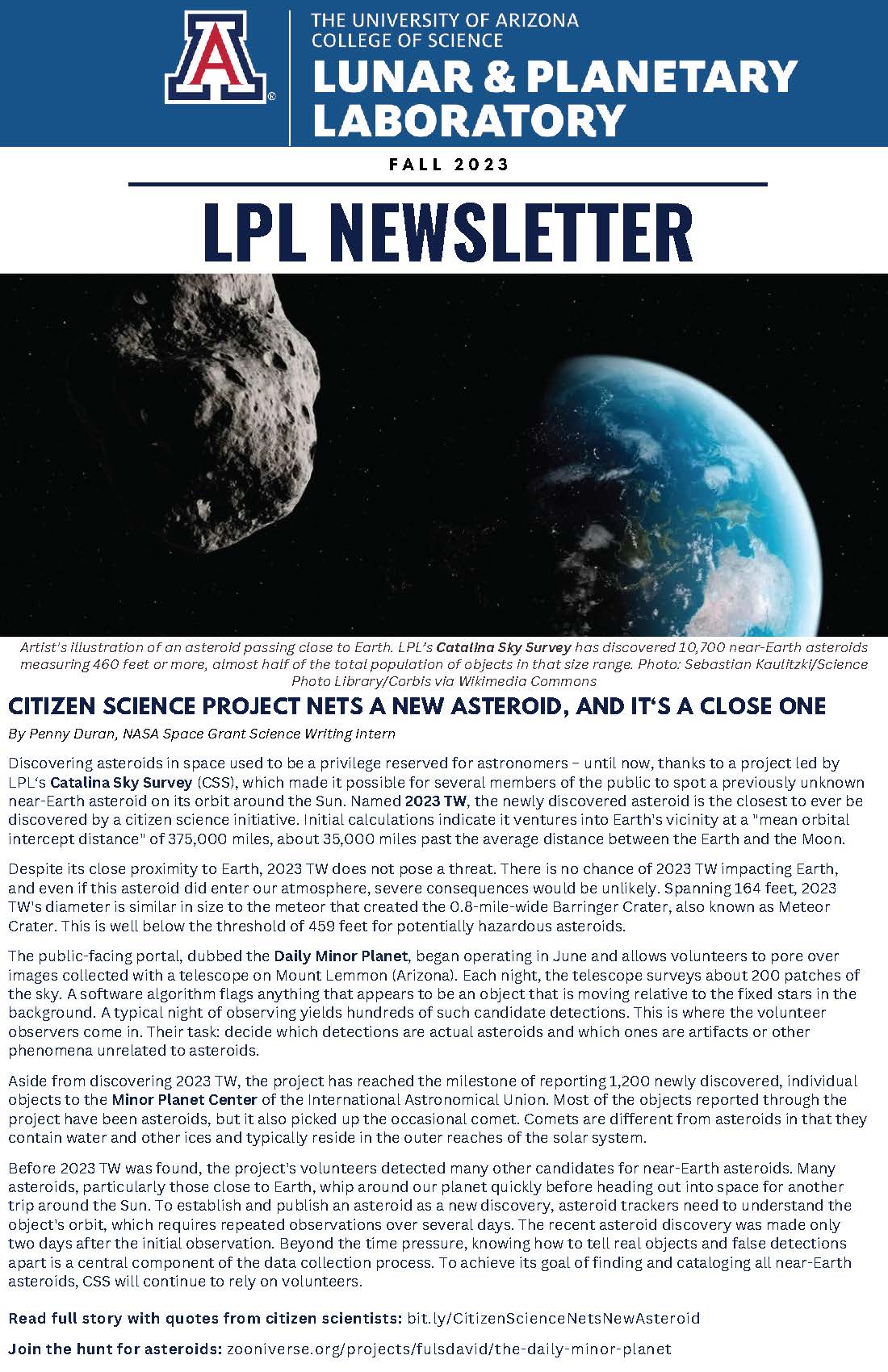ASTR 475 Planetary Astrobiology
ASTR
475
This course will explore the processes related to planet formation, the properties of planets and the planetary conditions required for the emergence of life. We will study the formation of our Solar System and exoplanetary systems, the distribution and properties of exoplanets, and the potential habitability of other planets/moons in our system or extrasolar systems. The course will also review science cases and possible future astrobiology studies, both in site and via remote sensing, of astrobiologically relevant environments. Toward the end of the semester a few guest lectures will highlight particularly exciting and timely topics. This course may be co-convened with PTYS/ASTR 575. ASTR is home department.
| Semester | Section Number | Instructor(s) | Day/Time | Location | Resources | |
|---|---|---|---|---|---|---|
| Spring 2024 | 1 | Sukrit Ranjan | Monday, Wednesday 11:00a.m.-12:15p.m. | Kuiper 312 | Syllabus D2L |
Arizona had a Stellar 2023 in Space Research. What's on the Horizon for 2024?

Arizona had a Stellar 2023 in Space Research. What's on the Horizon for 2024?
Download Arizona had a Stellar 2023 in Space Research. What's on the Horizon for 2024? (MP3, 10.7MB)
Mark Marley, director of the Lunar and Planetary Laboratory at the University of Arizona and head of the Department of Planetary Sciences, sat down with The Show to look back at some of the biggest stories of the year, and a look ahead to what might be in store in 2024.
Sweating The Small Stuff: UArizona Scientists Have Begun To Study Samples From Asteroid Bennu
At UArizona's Kuiper-Arizona Laboratory for Astromaterials Analysis, researchers have begun studying particles brought to Earth by the OSIRIS-REx mission. A suite of instruments ranging from optical to electron microscopes allows the team to probe the sample down to the atomic scale.
Lily Robinthal
PTYS/LPL Graduate Students
Lily Robinthal (she/her)
PTYS Graduate Student

Kuiper 326
Astrobiology, Exoplanets, Planetary Astronomy, Planetary Atmospheres
Last updated:
Jingyu Wang
PTYS/LPL Graduate Students
Jingyu Wang
PTYS Graduate Student

Kuiper 322
Astrobiology, Exoplanets, Planetary Astronomy, Planetary Atmospheres
Last updated:
Ruby Fulford
PTYS/LPL Graduate Students
Ruby Fulford (She/Her)
PTYS Graduate Student

Astrobiology, Planetary Geophysics, Planetary Surfaces, Small Bodies, Titan & Outer Solar System
Last updated:
Pagination
- First page
- …
- 21
- 22
- 23
- …
- Last page



